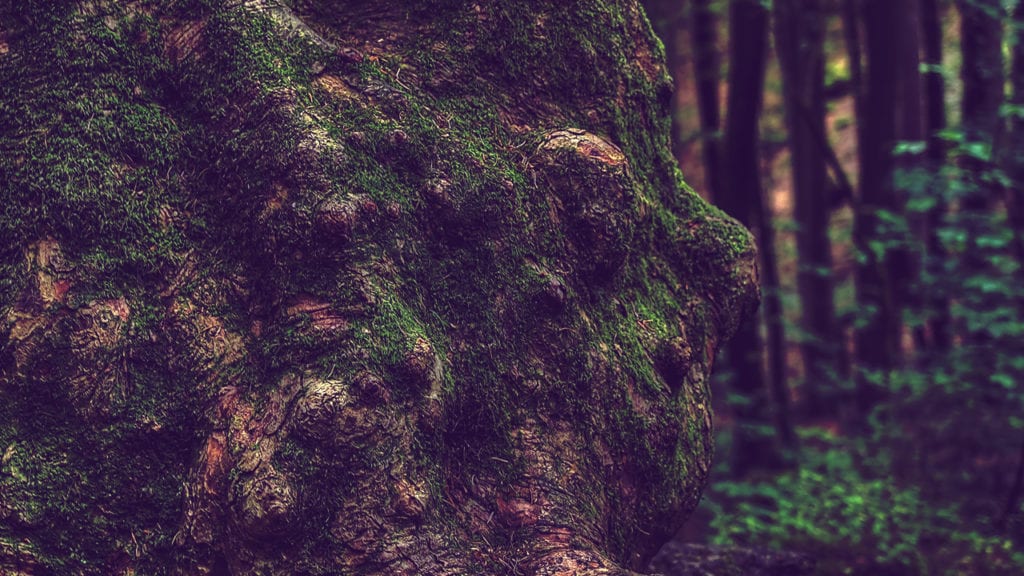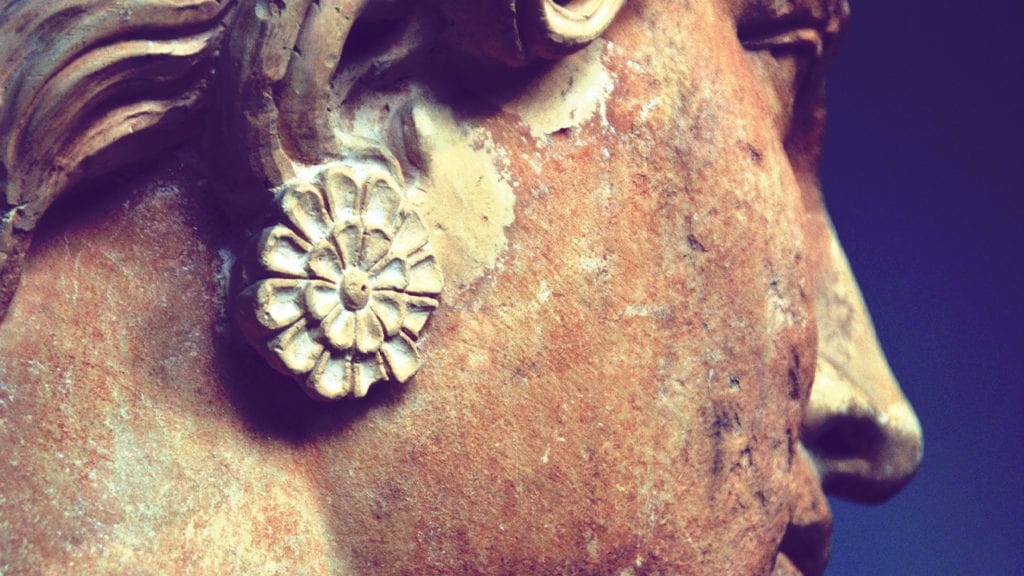Feraferia
Imagine a secluded society on the top of a distant mountain. The people there surround themselves with ramshackle temples and hand-made talismans of the Goddess, crafted over many years by several calloused hands. Imagine these followers thrive emotionally, spiritually, and psychically deep in the heart of nature. They sing devotional chants and dance a waltz of cosmic bliss, enshrouded in an ecological paradise. These are the followers of Feraferia.
What Is Feraferia
Feraferia is a neo-pagan, natural, mystic religion centered around the celebration of the Maiden Goddess Kore. Feraferia magicians utilize enchanting nature magic to re-establish a harmonious relationship with nature and natural spirits.
This tradition, described as a “love culture for wilderness”, is much like a realized fairy-tale. Its aim is to create a culture where one is connected to the living cosmos. Once connected, Feraferia promotes a feeling of Land-Sky-Love among all its followers.
Frederick Adams’ Journey to Feraferia
Feraferia was founded by the visionary Fred Adams and his partner Svetlana Butyrin (also known as Lady Svetlana). On August 2, 1967 Feraferia was recognized as a Church in the State of California, but this religion’s reach extends elsewhere in the United States and even as far away as Amsterdam.
The story of how Feraferia came about is quite intriguing. One day in the spring of 1956 Fred Adams was walking around his college campus in Los Angeles when he had a sudden vision. His attention was drawn to the pit of his stomach, around the Solar Plexus Manipura Chakra. There, Adams was convinced he felt the presence of divine energy. Instantaneously, he became aware that God was a woman and that the source of all beings rested in the sacred feminine.
After that magical awakening, Frederick decided to form an organization to explore further. Together with a few friends, in 1957 they established a group called the “Hesperian Fellowship,” which surpassed Fred’s initial vision of divine feminine worship and broached the subject of how to cultivate a paradise on Earth.
The fellowship advocated a sensitive and sensual relationship between humanity and nature. They imagined a self-sufficient, vegetarian, naturalist, voluntarily nudist society that would be detached from technology, hierarchy and violence. People would sing and dance and explore the much-encouraged “free creative play and erotic development” advocated by the group’s founders. Adams was strongly convinced that the world was due a new religion which would reconnect humanity’s severed instincts to the biosphere, nature and the cosmos. In 1957 he wrote a pamphlet titled “Hesperian Life and the Maiden Way”, which became the group’s manifesto.
The Fay or Fae in Feraferia
Frederick Adams thought long about the appropriate name for his religion. He searched for something to emphasize both the grace of the fairy world and the new group’s service to nature.
Eventually he arrived at three Latin words that deeply resonated: “Feras,” which means wild or the wilderness; “Feralis,” which indicates the ancestral; and “Faerie,” which translates to celebrations, or a festival. Combining these three Adams created: “Feraferia,” or “A Celebration of the Wilderness.”
Fred was mesmerized by the faeries, or divine nature spirits, and it was became mission to spread the word about them. He saw the role of faeries as paramount to mankind’s existence. They were guardians of the animal and plant kingdoms. This focus on faery paths became a central tenet of Feraferia, as expressed in religious sentiments like, “We follow the Faery Paths, which help us live and dance lightly on the earth.”

The Feraferia Goddess Kore
Feraferian theology sees the Holy Maiden, which in Greek is referred to as Kore, as the center of the Universe. She oversees the symphonic co-existence of all other unique, cosmic beings and is represented as a unified collection of polytheistic entities, rather than as a single-minded deity.
It is interesting to note that unlike other neo-pagan religions which emphasize the role of the Mother Goddess, Feraferia puts the Maiden Goddess on a pedestal. They drift away from the authoritative parental figure of the mother, and instead appraise the archetypal daughter. This daughter epitomizes attributes like creativity, nonviolence, delicacy, playfulness, sensitivity and many others. The Mysterious Wholeness of the four seemingly disparate archetypes (mother, father, son and daughter) is deeply woven into Ferferia. Indeed, that coalescence is precisely what Frederick Adams believes will ultimately restore the balance to the world. This unification is what the Maiden Goddess Kore embodies. She is seen as the herald that will usher in the Kore Age.
Kore in Mythology
In Greek mythology, Kore is the daughter of Demeter and Zeus, who was abducted by Hades (the God of the dead) to be his wife. In the Underworld she became Queen and received the name “Persephone.” She is indeed featured in the popular myth about Persephone and her mother Demeter, who went searching for her in the Underworld.
To her followers, Kore contains the embodies the entire life cycle, from death to rebirth. The myth about her eternal journey through that cycle is the basis of the Eleusinian Mysteries, which held nothing but fascination for Frederick Adams. The Rites of Eleusis were the secret rituals of the mystery school of Eleusis, in which the initiated were offered the opportunity to tap into the afterlife through a divinatory vision. This supposedly eradicated the fear of death and helped initiates understand nature’s cycle of rebirth. Seen this way, the parallels between Kore’s representation in Feraferia and the mythical lore of the Eleusian Mysteries becomes pretty clear.
Feraferia Festivals
In Feraferia, rituals are aligned with the seasonal changes and the transformations of Kore as the year progresses. “The year is a continual courtship between Moon and Sun”, and that is reflected in the nine festivals, which are called the “Nine Royal Passions of the Year,” and are recorded in a pamphlet that goes by the same name.
The pamphlet is written in a Tarot-like form and consists of poems and Adams’ paintings. Each celebrates the erotic flowering of nature and transformation of Kore. It is republished by The Church of the Hermetic Sciences and is available to the general public.
The Nine Royal Passions
The Nine Royal Passions are based on the Celtic Tree Calendar, also known as the Pagan Wheel of the Year. According to Frederick, “The Love Round of the Sacred year is both a cycle of continuous celebration and a mandala of mystery initiations”. The Nine Royal Passions include all the eight seasonal celebrations, alongside a ninth added celebration dedicated to Kore: Cosmos-Repose. This festival promotes an elemental return and takes place on November 28th.
Among the set of festivals are some familiar entries, like the first holiday of the year: Beltane. Feraferia celebrates Beltane on May 1st and festivities/rituals tend to revolve around erotic depictions of the arriving of Spring, as indicated in this pamphlet poem:
“The Festival of Full Flowering. Sex crowns the Holy Nakedness of blossomming flesh.
By sex the Two are divided only to be moulded closer in bliss.
All glistening, dewy and hot, the Holy Pair announce Their Engagement.
Quivering for the naked clasp, soft dewy petals unfold pungent Male and fragrant Female.”
You can read more about all the nine celebrations as they were described by the founders here.
Each of the celebrations includes prayers, rituals and lots of merry-making. All the feasting, however, has an ecological theme and is in alignment with what is happening in the region during that particular season. Many of the individual festivals are described in the early issues of “Korythalia“, which is Feraferia’s newsletter, and whose archives are publicly available.
Feraferia Rituals and Symbols
Fred and Svetlana provided their followers with a number of varied rituals that incorporated the symbolism of their new theology.
They provided a set of seasonally aligned daily devotions and chants. At the start of every daily ceremonial, an altar consisting of a Sacra (icon or talisman) of Kore, such as a painting or a statue, is prepared. Then, Sacra representing the five elements are required: a horn or a whistle for air, an incense for fire, pestle filled with soil and seeds for earth, a pot of natural water for water, and an omphalos (mandala) made from grass for ether. They are each placed, in alignment with specific cardinal directions, on the altar. Practitioners also utilize a bell to call the nature spirits. They use a mandala arrangement of Icons or Talismans placed on the floor. These Icons represent the Rays of The Four Quarters.
After the ritual items are placed, practitioners chant a Kore Incantation. They then speak to the current season, the moon phase, the Faerie Tree Month, the day of the month, sacred names of the goddess, the day of Aphrodite, Estsanatlehi and whatever other magical influences are at play on that specific day. Each of these is pronounced loudly and clearly, accompanied by certain hand gestures.
Feraferia also holds communions of a meditative nature. The goal of these is to astral travel collectively to a nearby forest where the devotees meet the Maiden Goddess. This is generally followed by a more formal ceremony.
Feraferia Now
The reason we have access to such a rich encyclopedia of Feraferia rituals, beliefs, and practices these days is because in 1999 the Amsterdam-based artist Peter Tromp (Phaedrus) came across the religion at a European Wiccan conference in Germany. Feraferia resonated with him and decided to get in touch with Fred Adams. Phaedrus implemented the theology in his own Wiccan group. He then put Feraferia on the internet, thus preserving its heritage for years ahead. Up until that point, the practitioners of Feraferia very much held a closed circle. Phaedrus’ uploading of the information ensured the tradition could spread – and spread it did.
But, despite the group’s hesitation to speak too openly about Feraferia before the internet, it still had spread far. In 1989, Jo Carson, a member of the tradition and close friend to Fred and Svetlana, made it her mission to popularize Feraferia. She began shooting interviews with the founders. 20 years later the documentary “Dancing with Gaia” was ready. Jo Carson became the leader of Feraferia after the death of Fred Adams in August 2008 and of Lady Svetlana in May, 2010. The new leader wrote the book “Celebrate Wildness: Magic, Mirth and Love on the Feraferia Path,” which further explores the magic of this fairy religion.
Some criticize Feraferia for being more of an artistic utopia, rather than a functioning ideology. One thing is for sure, however. It is built upon the principles of love for nature, the cosmos and one another. And the ultimate aim is to save the Earth.

Eleonora Hristova is a freelance fashion, lifestyle, art, and sustainability copywriter with a vast, diverse background. Eleanora organizes writing workshops to help people tap into their creativity.




This is very interesting!
Thanks for checking it out 🙂